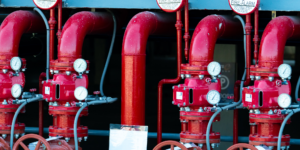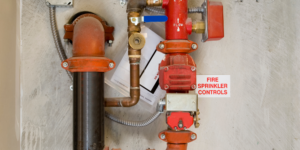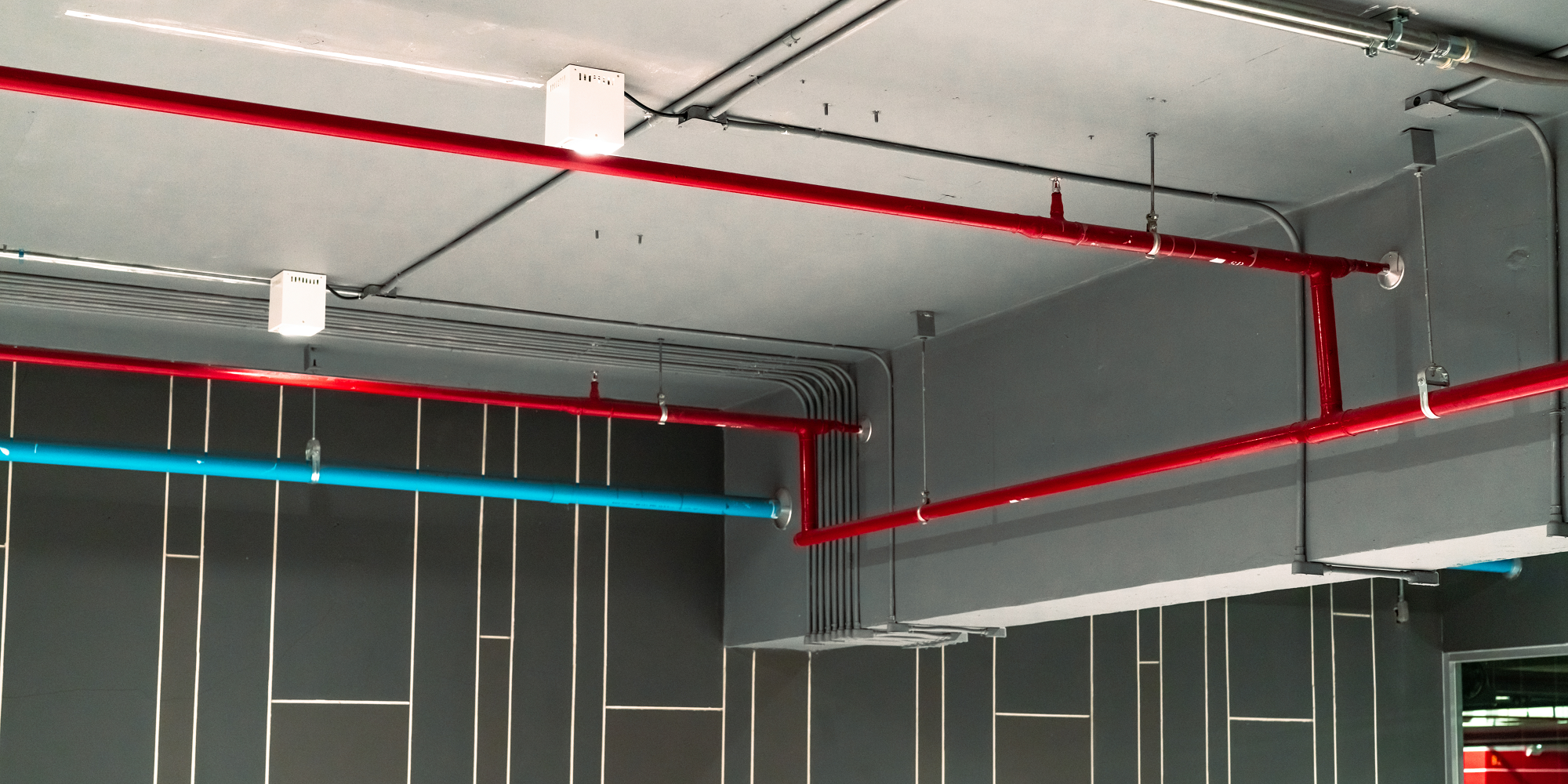Building safety requires fire sprinkler systems. Traditional fire sprinklers have been used for decades, but electrically controlled ones are creating waves! Fire protection is more precise and controlled with these cutting-edge solutions. We’ll explain electrically operated fire sprinklers and their pros and cons.
What are electrically operated fire sprinklers?
Electric fire sprinklers, often called motor-driven fire pumps, are a recent fire defense innovation. Electrically operated sprinklers use electricity instead of gravity or stored energy.
A reliable municipal water supply or storage tank supplies water to an electrically operated pump in these systems. After pressurizing the water, the pump distributes it through pipes and nozzles throughout the building.
Electric fire sprinklers’ constant and controlled water flow is their principal benefit. These systems can maintain pressure regardless of water supply changes by using an electrical motor to operate the pump.
Electrically powered sprinklers often incorporate built-in monitoring for remote control and system status updates. This gives site managers real-time information about potential difficulties and malfunctions, enabling speedy emergency intervention.
These modern systems can also be linked with alarm panels and security equipment to boost safety.
Traditional fire sprinklers are less reliable and efficient than electrical ones. Commercial establishments seeking full fire protection without compromising performance are increasingly using them due to their precise control mechanisms and integration possibilities.
How do electrically operated fire sprinklers work?
Electrical fire sprinklers automatically detect and extinguish building fires. Electric signals activate these sprinklers to spray water or fire-retardant material on the affected area.
It starts with heat detection. Electrically powered sprinklers have sensors that detect fires by sensing high temperatures or smoke. These sensors alert the control panel when a temperature threshold is achieved.
The control panel opens a main water supply electric valve when signaled. This opens pipelines to direct water to sprinkler heads near the fire.
Each sprinkler head features a heat-sensitive element or sensor. Each head opens and releases water onto the flames below when exposed to enough heat or smoke.
Electrically driven fire sprinklers stop fires from spreading by reacting rapidly and dispersing water at the source.
These devices watch for combustion and respond instantly, providing 24/7 protection. They provide reliable automated fire protection, decreasing damage and giving inhabitants more time to evacuate.
Electrically powered fire sprinklers suppress flames at their start, saving lives and property. They are essential to residential and commercial firefighting strategies due to their efficiency.

Advantages of electrically operated fire sprinklers
Fire sprinklers that are powered by electricity have many advantages. Advanced detection technology makes these systems efficient and fire-detecting. A possible fire can be extinguished early, minimizing damage and injury or death.
Customizing the system to meet needs is another benefit. Electrically driven sprinkler systems can be customized for residential, commercial, and industrial structures. This flexibility optimizes each system for maximum efficiency.
Electric fire sprinklers are commonly connected to a central monitoring station that alerts emergency services when a fire is detected. Firefighting success and flame spread prevention are greatly improved by this quick response.
Additionally, these systems require less maintenance than traditional ones. Regular inspections and testing ensure proper operation without cost or disturbance.
Electrical fire sprinklers use less water due to their tailored discharge mechanism. This eliminates water waste and incident-related water damage from excessive dousing.
Electrically driven fire sprinkler systems improve safety through quick detection, customization choices, centralized monitoring stations, decreased maintenance, and water conservation.
Disadvantages of electrically operated fire sprinklers
- Power supply: Electric fire sprinklers require a constant power source, which is a downside. In a power outage or electrical failure, these systems may fail, leaving the building vulnerable to fire damage.
- Complexity and maintenance: Electrical fire sprinkler systems are more complicated. Complexity complicates installation and maintenance, requiring expertise. To ensure all components work, regular inspections and testing are essential.
- Installation and maintenance costs are another drawback of electrically powered fire sprinklers. Due to wiring, control panels, and other equipment, these systems may cost more to install.
- Environment restrictions: Electrically controlled fire sprinklers may not work in all settings. Over time, high humidity or corrosive substances may affect electrical components.
- Electrical failures or system errors can cause false activations in electrically powered fire sprinkler systems, while rare. False alarms might cause water damage if not treated by trained professionals.
When deciding if electrically controlled fire sprinklers are right for you, assess the pros and downsides.

Conclusion
Fire sprinklers powered by electricity are modern and efficient. They release water to extinguish fires by sensing heat or smoke. Innovative sprinkler systems have many advantages.
Electrically operated fire sprinklers respond quickly and accurately to fire emergencies. Advanced sensors allow these systems to detect even tiny temperature or smoke changes and activate immediately.
Electrically actuated fire sprinklers are also reliable and effective. They automatically activate, decreasing response time and damage from manual activation delays.
Their environmental flexibility is another benefit. Residential, commercial, warehouse, and factory environments can use electrically powered fire sprinklers because they can be adjusted.
These unique technologies offer remote monitoring and other safety measures. Facility managers or authorities can monitor the system in real-time and receive alerts for problems.
When choosing electrically operated fire sprinklers, consider their downsides. Due of their complex technology and installation requirements, they may cost more than ordinary sprinkler systems.
Electrically powered fire sprinklers require regular inspections and testing, making maintenance more difficult. For optimal emergency functioning, maintenance practices must be performed continuously.
